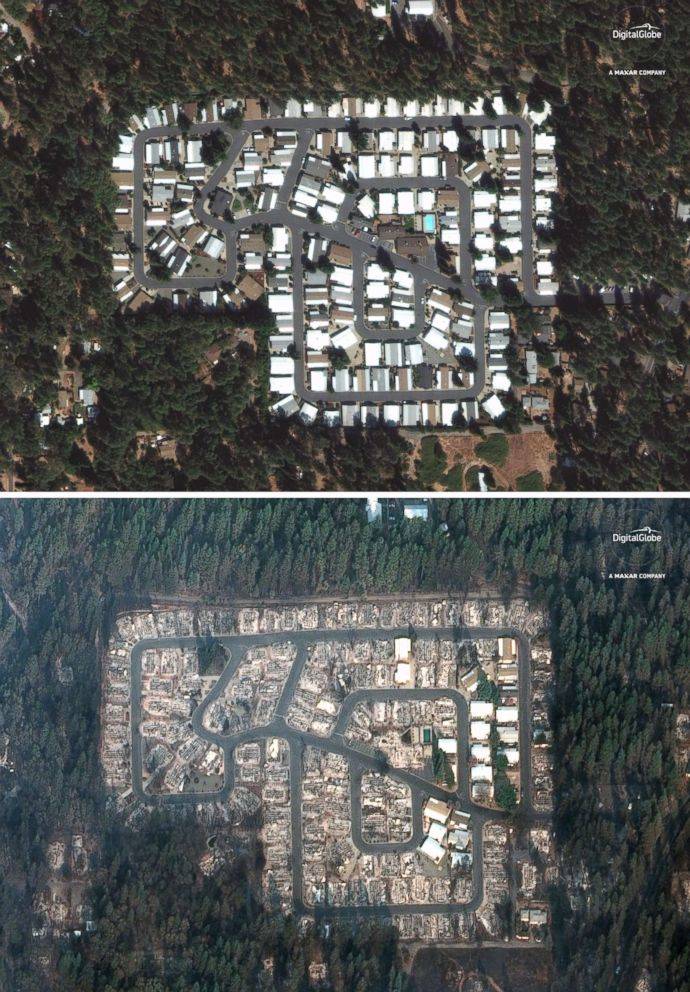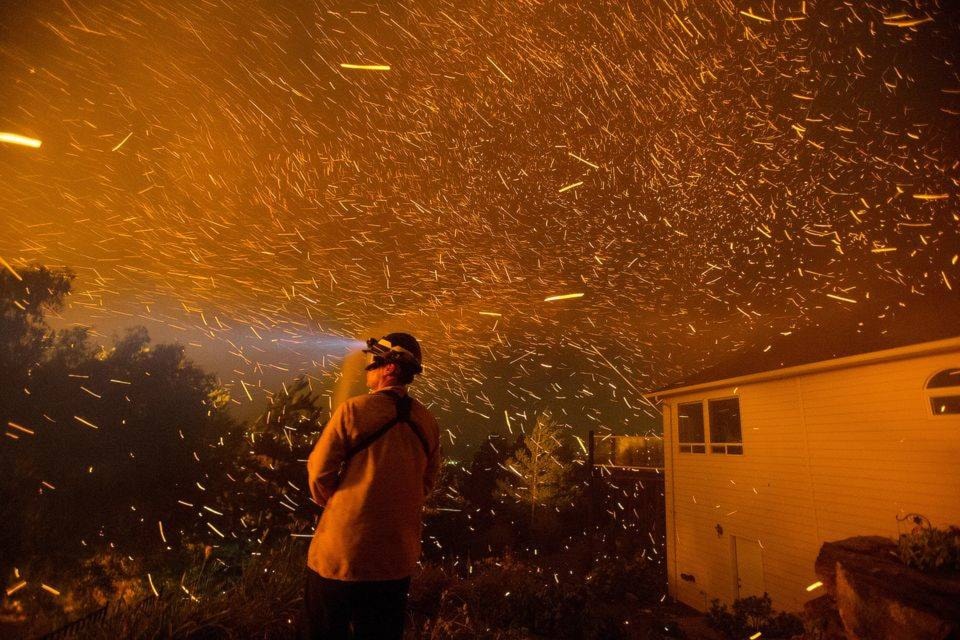It’s commonly believed that bulldozing a fire break around a city would protect it from an advancing wildfire.
The head of wildfire mitigation at the Regional District of Central Kootenay (RDCK) says that’s a dangerous myth. It’s airborne embers that ignite houses, he says.
“Clearing a swath of forested land around a community won’t protect it,” says Joel Hamilton. “There have been instances where embers have travelled up to nine kilometres. There are examples in the Kootenays where embers have crossed Kootenay Lake or the Arrow Lakes and ignited a fire.”
Check your eavestroughs
If there are dry leaves or other debris in your gutters, you have a problem, Hamilton says. That litter could be ignited by embers from a distant wildfire.
Window sills, garden boxes, under decks, any protected places where fuels can collect and dry, all are potentially dangerous, he says.
Hamilton supervises eight fire mitigation specialists at the RDCK. Rural residents can invite them to their property for a free, detailed assessment of the fire resistance of their house and property.
Conifers, bark mulch, stacked wood
In addition to searching out dry debris around your house, the specialist will look at vegetation. Conifers within ten meters of your house are potentially dangerous.
“Having that big dry juniper right outside your single pane window is a big red flag,” Hamilton says. “It will go up very quickly.”
In fact anything flammable within a metre of your house needs to go: bark mulch, stacked wood, vegetation.
Related:
• Action by Nelson area landowners key to wildfire safety, expert says
• FireSmart assessment an eye-opener for Nelson homeowner
• Firesmart program has homeowners ‘thinking like an ember’
A checklist and a score card
The fire mitigation expert will walk your property with you, armed with a checklist, a score card, and good advice.
They will also look at your roof and your building materials.
“Building materials like cedar shake roofs, and general roof cleanliness — the roof is the main [place where embers will] hit the house,” says Hamilton. “If you have damaged shingles or exposed tar, or if the shingles are curled, embers can accumulate in there.”
How to get started
The RDCK fire mitigation specialists can be reached at 250-352-8177 for assessments in rural areas. For properties within the city contact the Nelson fire department at 250-352-3103.
Hamilton says that of course it is the responsibility of governments and the forest industry to prevent and fight wildfires, but individual landowners have a major responsibility, not just to themselves but also their neighbours.
He refers to a photo (see below) of a destroyed California subdivision with the trees around it still standing, unburned.
“There is nothing anyone can do for the homeowner other than what they can do themselves. Nobody will come and do this for you. But we can let you know what the risks are.”
This video of the Fort McMurray fire shows embers starting fires in the yards of houses across the street from burning trees.
Knowing the risks is a good start
If property owners do the recommended work — cut down that juniper, move the woodpile away from the house, get rid of flammable furniture on the deck — they can then invite the assessor back to determine whether the home can be certified as FireSmart.
It might not be possible to do all the recommended work at once.
“Even if you just know what your risks are that is huge improvement, and you can start on the most important things,” Hamilton says.
Four years ago, in the first year of its FireSmart program, the RDCK did about 200 assessments in rural areas in the West Kootenay. Last year they did 400. This year there are already 90 applications.
Hamilton told the Star that properties with FireSmart certification are eligible for a 10 per cent discount on insurance through The Cooperators. He expects other insurance companies to follow suit.
Open House
There will be a public open house for the public to participate in a conversation about the wildfire threat to local communities on May 7 from 5:00 to 8:00 p.m. at the Adventure Hotel.
On the agenda will be the work that is already being done, and what residents can do to reduce the risk.
Neighbours working together
The RDCK also has a community recognition program, in which neighbourhoods or communities work together toward collective FireSmart recognition.
“You don’t have to officially become FreSmart to get recognized,” says Hamilton. “You have to just make strides toward it.”
The community or neighbourhood organizes itself, invites in a mitigation specialist, gets recommendations, then makes plans to implement them.
Communities that have done this and been recognized as fire smart communities are Kaslo Backroad, Loki Lots (near Kaslo), Woodbury, Middle Road on the north shore, and Queens Bay. Nine other communities have applied.
Other than making the community safer for everyone, there are other advantages to the community program, says Hamilton.
“It brings the community together, increases property value potential, insurance companies starting to take note of this, and also a lot of elected officials are getting behind it and helping it along.”
‘It’s motivating’
Hamilton was recently hired by the RDCK after years of experience in fire mitigation and fire fighting for Parks Canada. He’s spent a lot of time on the front lines, embers blowing all around him.
What’s that like?
“It’s motivating,” he says. “I have been in many scenarios with ember brands forward of the front of the fire — it allows a fire to gain distance by leapfrogging ahead.
“Fires travel in two ways: they are wind driven, or they create their own convection. That gives them the ability to transport firebrands really far, often opposite to the prevailing winds because it is creating its own weather.”

